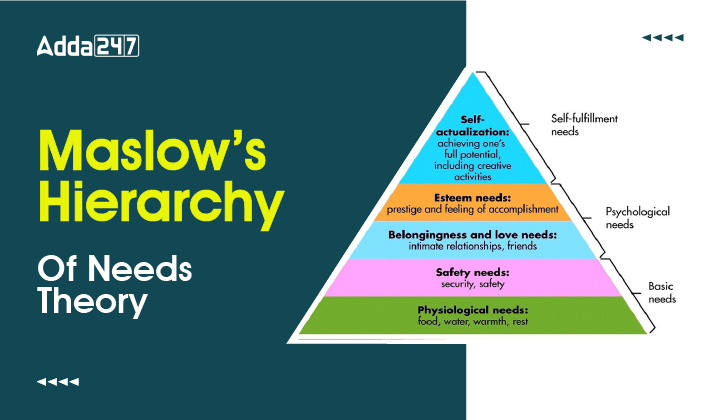Table of Contents
Maslow’s Hierarchy of Needs is a well-known psychological theory that describes human motivation through various levels of needs, starting from basic survival requirements to higher-level goals . This theory helps explain what drives people’s actions in different situations. Below, we discuss its key concepts and provide a downloadable PDF for easy reference.
What is Maslow’s Hierarchy of Needs Theory
Abraham H. Maslow, a renowned humanistic psychologist, introduced one of the most influential theories in understanding human motivation — the Hierarchy of Needs. This theory presents human desires as a pyramid-shaped model, ranging from fundamental physical requirements to the pursuit of personal growth and transcendence. While often interpreted as a linear progression, Maslow emphasized that individuals can operate across multiple levels simultaneously.
The Pyramid of Human Needs
Originally structured as five tiers, Maslow’s model was later expanded to eight levels. These needs are classified into three broad categories:
| Category | Need Level | Description |
| Basic Needs | 1. Physiological Needs | Food, water, shelter, clothing, sleep, air — essential for survival |
| 2. Safety Needs | Security, stability, law & order, protection from fear or harm | |
| Psychological Needs | 3. Belongingness & Love | Social relationships, intimacy, affection, friendship |
| 4. Esteem Needs | Self-respect, confidence, recognition, achievement | |
| Growth Needs (Extended) | 5. Self-Actualization | Personal growth, peak experiences, realizing full potential |
| 6. Cognitive Needs | Curiosity, knowledge, intellectual exploration | |
| 7. Aesthetic Needs | Love for beauty, balance, harmony, and artistic experiences | |
| 8. Transcendence Needs | Helping others grow, spiritual fulfillment, going beyond the self |
Maslow’s Hierarchy Category wise
Maslow’s Hierarchy of Needs is a motivational theory that categorizes human needs into different levels, starting from basic survival requirements to higher aspirations of growth and fulfillment. The original five-stage model includes physiological needs (food, water, shelter), safety needs (security, stability), love and belonging (relationships, community), esteem (respect, achievement), and self-actualization (fulfilling one’s potential). Later expansions introduced cognitive needs (knowledge, curiosity), aesthetic needs (beauty, balance), and transcendence (helping others, spiritual growth). This framework helps explain what drives human behavior and personal development. Below, we break down each category in detail.
| Level | Category | Description | Examples/Components |
|---|---|---|---|
| Basic Needs | 1. Physiological Needs | Fundamental biological requirements for survival. | Food, water, air, sleep, sex, homeostasis. |
| 2. Safety Needs | Need for security, stability, and freedom from fear. | Personal safety, health, job security, financial stability, law & order. | |
| Psychological Needs | 3. Love & Belonging Needs | Desire for meaningful relationships and social connections. | Family, friendships, romantic love, community, group belonging. |
| 4. Esteem Needs | Need for respect, recognition, and self-worth. | Lower: Status, fame, prestige. Higher: Confidence, achievement, independence. | |
| Growth Needs | 5. Self-Actualization | Realizing one’s full potential and pursuing personal growth. | Creativity, problem-solving, authenticity, morality, spontaneity. |
| 6. Cognitive Needs* | Desire for knowledge, understanding, and intellectual stimulation. | Learning, curiosity, exploration, seeking meaning. | |
| 7. Aesthetic Needs* | Appreciation of beauty, balance, and pleasing experiences. | Art, nature, symmetry, order, elegance. | |
| 8. Transcendence Needs* | Helping others grow, spiritual fulfillment, and purpose beyond the self. | Altruism, philanthropy, meditation, universal connection. |
Features of Maslow’s Theory
- Not strictly linear – people may satisfy higher needs without fully meeting lower ones
- Possible regression – during crises (e.g., natural disasters), individuals may fall back to basic needs
- Overlap exists – multiple levels can be active simultaneously
- Peak experiences – moments of profound joy, creativity, or realization that may occur across various levels
Criticisms of Maslow’s Theory
- Rigidity – Not all people follow the same upward path of needs
- Cultural bias – The theory is based on Western ideals of individualism
- Lack of empirical backing – Hierarchical structure is difficult to prove experimentally
Limitations of Maslow’s Theory
- It is essential to note that not all employees are governed by same set of needs. Different individuals may be driven by different needs at same point of time. It is always the most. powerful unsatisfied need that motivates an individual.
- The theory is not empirically supported.
- The theory is not applicable in case of starving artist as even if the artist’s basic needs are not satisfied, he will still strive for recognition and achievement.
Maslow’s Theory Real-World Example: Asif’s Cricket Journey
Asif, a young aspiring cricketer inspired by Sachin Tendulkar, provides a perfect illustration of how various needs operate:
| Need Level | How It Applies to Asif |
| Physiological Needs | Sleep, nutrition, and physical care for intense training |
| Safety Needs | Safe training environment, secure coaching setting |
| Belongingness | Camaraderie with teammates, encouragement from family |
| Esteem Needs | Recognition of his efforts, performance evaluation, confidence |
| Self-Actualization | Aspiration to become a successful cricketer like his idol |
| Transcendence (future) | Potentially mentoring others or contributing to the community |
Maslow’s Hierarchical Theory Important Links
| Content | Important Links |
| Download Maslow’s Hierarchical Theory Study Notes PDF | Download PDF |
| Practice Quiz on Maslow’s Hierarchical Theory | Click Here |
Learn More with Previous Year Questions based on Maslow’s Hierarchical Theory
Q . Arrange the following according to Maslow’s hierarchical structure of needs. (UGC NET Jan, 2025)
- Esteem needs
- Safety
- Self actualization
- Aesthetic
- Physiological
Choose the correct answer from the options given below:
- E, B, D, A, C
- A, C, D, B, E
- E, B, A, D, C
- E, D, B, A, C
Correct Option – 3
Q. Match the following types of needs in Column A with their corresponding examples in Column B:
| Column A (Type of Need) | Column B (Example) |
| A. Cognitive Needs | i. Meditating for spiritual growth |
| B. Self-Actualization | ii. Pursuing higher education for intellectual growth |
| C. Transcendence | iii. Volunteering to uplift underprivileged children |
| D. Aesthetic Needs | iv. Designing one’s room with artistic decor |
Choose the correct answer from the options below:
- A-ii, B-iii, C-i, D-iv
- A-i, B-ii, C-iii, D-iv
- A-ii, B-i, C-iii, D-iv
- A-iii, B-ii, C-iv, D-i
Correct Option: 3
Q. Which of the following needs was placed after Esteem needs in Maslow’s extended hierarchy?
- Self-actualization
- Aesthetic needs
- Cognitive needs
- Belongingness and love
Correct Option: 3




 UGC NET Study Notes for Paper 1, Downloa...
UGC NET Study Notes for Paper 1, Downloa...
 GSET Teaching Aptitude Questions and Ans...
GSET Teaching Aptitude Questions and Ans...
 समुद्र का पर्य�...
समुद्र का पर्य�...












